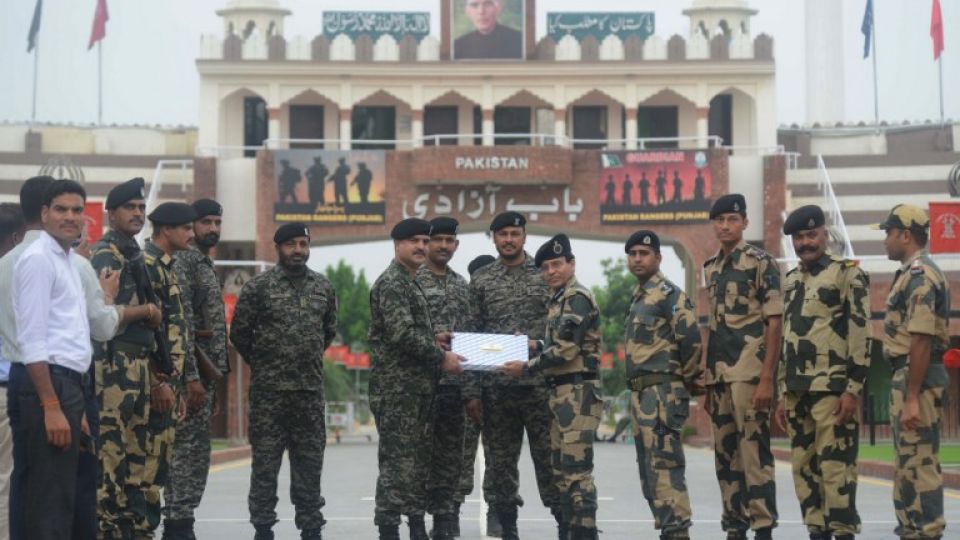February 15, 2019
Would a re-elected Modi rethink his Pakistan policies.
Imran Khan and the military leadership have been expressing a desire for improved relations with India. But India is unlikely to respond anytime soon. And the reasons go beyond its upcoming elections.
I recall here a private briefing some of us South Asia hands in Washington got from a close adviser of Narendra Modi soon after he took office as prime minister. Unaware of my identity, he spoke of Pakistan with contempt. “We are going to treat Pakistan as if it were on the other side of a high wall,” he said. Four years on, the adviser is there as is India’s Pakistan policy.
How has the policy endured for so long? The search for the answer opens up a vast landscape of policy, politics and ideology in India. Beginning in 1991, India has been on a steady march to foster external relations conducive to its economic growth and technological development. This would define how it engaged with great powers, especially the United States, thus raising its economic weight, military potential, and diplomatic stature.
Modi has enhanced this policy, making it and national security the centrepiece of India’s priorities. Balancing China and containing Pakistan, knitted together by the opposition to CPEC, reflect and affect these policies as do India’s relations with Afghanistan.
India, Modi reckoned, could not rise under the threat of destabilisation by alleged non-state actors from across the border. He would use India’s relations with Washington to strengthen his hands vis-à-vis Pakistan, particularly to change its ‘behaviour’. And, with his tough approach towards the latter country, help advance US interests in South Asia.
There were, no doubt, important domestic stimuli also at work; the Pakistan policy represents the historical Rashtriya Swayamsevak Sangh view of Muslims, Pakistan and Kashmir. Then, of course, it reflects the position of the Bharatiya Janata Party. The BJP that Modi leads has a much broader appeal. Marketing-savvy and skilled in the use of digital tools, Modi has tapped into the traditional nationalist ideology of his party, and by bundling it with a shiny economic agenda and populism reached out to wider demographics. And the Pakistan issue, traditionally popular with the BJP’s voter base, has helped.
Read: India’s intransigent approach
Tensions with Pakistan have always served to move general populace away from dissatisfaction on other issues. But the accent on militancy, and the way Modi played the attacks in Pathankot in January 2016 and Uri in September 2016 that triggered an enormous emotional response from the Indian citizenry, has given the party a broader constituency.
The issue also helps Modi gain his military’s support. India has risen and so has its military’s ambitions. Militancy broadens the scope of conflict and enlarges the concept of national security elevating the military’s national profile. All it needs is a credible enemy to raise the stature of the issue. From its perspective, Pakistan fits the bill.
Modi knows the power of the visual for modern media. The invitation to Nawaz Sharif to his (Modi’s) swearing-in ceremony and the air dash to Lahore on Sharif’s birthday in December 2015 had a dramatic impact internationally, especially in Washington. It showed Modi as keen for good relations, and Pakistan as a spoiler. Modi managed to conjure up this image by avoiding a military response to attacks he perceived to be coming from across the border. Instead, cancelling talks and sabotaging the Saarc summit kept the focus on Pakistan’s ‘behaviour’, while earning India praise for its ‘restraint’.
The issue thus serves, among other purposes, India’s attempts at isolating Pakistan and keeping it off balance, limiting its diplomacy on Kashmir. Modi’s brutal repression of Kashmiris has no room for compromise; hence no compulsion for dialogue.
Indians like the Pakistan policy to be in the hands of a strong leadership. They would go along with peace if possible, as with Vajpayee, or war if necessary, as long as the leadership was resolute and decisive. Would a re-elected Modi have a rethink on Pakistan? It would all depend on the trade-off at the time between the unknowns of normalisation with Pakistan, and the familiar gains of tensions for domestic politics, Kashmir, and India’s regional and geopolitical interests.
Any economic incentive will not feature yet given Pakistan’s position on MFN and transit trade, and the Afghanistan situation, that inhibits pipeline prospects and trade with Central Asia. But concern of being left behind in the scramble for peace in Afghanistan may count.
Pakistan may have responded well, as far as Pakistan-India relations go. But the real question to ask? Modi’s Pakistan policy enhances India’s national objectives; is Pakistan’s India policy doing the same for Pakistan?
The writer, a former ambassador, is adjunct faculty Georgetown and Syracuse University.


